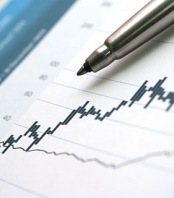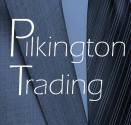Below is an article I read that puts the age old debate of ‘The Stock Market is so risky’ into perspective. I think most reasonable people get this article, once they’ve had a chance to weigh up the facts. The problem for most is working out just what shares they should buy. This is when you pick up the phone and we have a chat. Read on.
Credit to Motley Fool.
Now, I’m not about to put the boot into property investing — done sensibly, it is without doubt one of the best investments you can make. And I’m not going to preach on about how shares are so much better — each to their own I say.
But the difference in attitudes towards shares and property couldn’t be more stark, and is worth teasing apart. Especially when much of the perception is based on complete misconception.
Take the idea of risk.
Now a loss making mining exploration company with mountains of debt and an ever shrinking balance sheet is risky — super risky — but that says nothing about the long term risk associated with an established, profitable ‘blue-chip’ company.
Sure, all shares have a tendency to be volatile over the short term, but that speaks only to the risk associated with short-term price speculation. I’d wager that buying and selling properties in quick succession was equally risky — perhaps more so given the costs and difficulties of selling houses.
People also like to tell me that shares aren’t ‘real’; they are intangible assets. Bricks and mortar, on the other hand, is a solid asset that you can touch. And as such, its value is more real.
Obviously, these people have never been to a Bunnings warehouse, a Woolworths supermarket or a Commonwealth Bank. They all seem pretty real to me.
For some reason, people also like to tell me that property never loses value. Shares, on the other hand, can ‘crash’ and do so regularly.
I’d suggest these people open up a history book. Property — like all assets — does of course ‘crash’ from time to time. Ask an American or Spaniard if they think property doesn’t crash! Sure, we haven’t seen a significant pullback in price in an Australian capital city for quite some time, but right now there is a property crash underway in many mining communities. A few years back, many Gold Coast properties lost close to half of their value and have still yet to recover.
Here’s the irony.
That mate of mine, who feels I am being risky with my investments, has 2 properties; one is his residence the other an investment. Both are in the same geographic area (and hence face similar risks), and both are highly leveraged — about 90% of their value is in debt.
The investment property actually costs more in interest, fees and maintenance that what it generates in rent. He gets a tax benefit from this ‘negative gearing’, but even with that he is still losing money each year.
Every spare cent he manages to save goes towards servicing his loans. He loses sleep anytime he hears that interest rates might rise — and I don’t blame him.
Seems pretty risky to me!
Of course, if the value of his properties can grow enough over the coming years, it will all be worthwhile — he’ll likely make a great return. That’s what happens when a highly leveraged bet pays off.
But if his properties don’t appreciate in value fast enough, or if he can no longer service his obligations while he waits, he is going to get taken to the cleaners. In a BIG way.
And I’m the one taking a huge risk?
Now, what he is doing doesn’t mean that property investing in general is risky — it’s just the way he is going about it.
And it’s the same with shares. Invest in poor companies, with borrowed money and a short time horizon — well, you deserve what you get.
But if you buy a diversified range of wonderful businesses, with established and growing operations, strong balance sheets and the capacity to deliver regular and attractive tax effective dividends — and with the intention of holding tight for many years — you’ll likely do very well. Sure, you’ll face the inevitable bumps along the way, but I wager you’ll do better than most.












